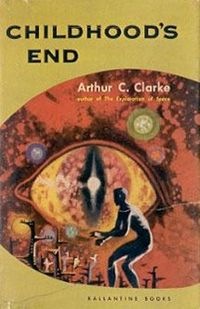And how you can help.
Yesterday, I decided that I wanted to start downsizing and simplifying my life. I want to spend more of the year traveling, experiencing more of what this whole country has to offer — rather than what’s around me in Wickenburg or Phoenix. I’m hoping that my travels will help me find the place I want to retire to. I know that neither Wickenburg nor Phoenix is that place.
As George Carlin says, “Your house is a pile stuff with a cover on it.”
I’ve been in my Wickenburg home for 12 years and have accumulated at least 12 years worth of “stuff.” Since I’m addicted to books, a lot of that stuff is books. I have a library of about 500 books spread out over three rooms and lots of shelves. I’ve read many — but sadly, not all — of these books. They cover many of the topics that interest me now — and have interested me over the past 20 or more years. Not much of it is fiction — I tend to use libraries for that these days, since I usually don’t read a novel more than once.
A lot of my library consists of reference books: books I consult — or think I need to consult — for my work or hobbies. For example, I have at least 75 books about writing and at least 40 about flying helicopters. I have books about horses and parrots and aquarium fish — the pets I’ve owned over the years. (We don’t need a book about dogs; we’ve learned through experience.) I have books about Web design and software programs and operating systems. I have books about business and philosophy. I have travel books about places all over the U.S., South America, Europe, and even Australia.
And, of course, I have the coffee table books I’ve gotten as gifts, most of which are beautiful but poor matches for my interests.
Thinning out my library seemed a good place to start thinning out my stuff. So I did what I usually do when I want to sell a book — I listed a bunch of them on Amazon.com.
Listing a book for sale on Amazon.com is very easy — as long as you have the ISBN. Just enter the ISBN in a form field and Amazon displays the book. You indicate the book’s condition, set a price, and choose shipping options. Amazon then lists it as another “Buying Choice” in the right column of the page where the book is listed and described.
A long time ago, I bought a used book on Amazon.com through a “marketplace” seller. The book was described as used in “Used – Very Good” condition. But when the book arrived, I found it full of underlining. I wigged out and contacted the seller. They refunded the payment; I returned the book. The whole experience left a sour taste in my mouth that took several years to wear off.
Since then, however, I’ve bought other books through marketplace sellers. The first after that bad experience was Drood, a novel. The book is enormous — 784 pages — and Amazon was selling it for well over $20 at the time. But someone else was selling it for $8 in “Used – Like New” condition. I took a gamble. The book, when it arrived, was indeed like new. I’ve since bought a few other books this way.
The drawback to buying from Amazon.com Marketplace sellers is that the books never qualify for “Free Super Saver Shipping.” You have to pay shipping for each book you buy. But if you’re saving $10 on a book, you’re still ahead if you spend another $3.99 for shipping.
Anyway, I currently have 57 books listed on Amazon.com’s Marketplace for sale. All of the books are in new or excellent condition — I treat my books very kindly. (The idea of writing in a book appalls me, although I know it’s common.) I’ve priced them to sell, meaning they’re usually the lowest price for a new or used book. The main goal is to unload them without cost — not to make a fortune selling books.
I’ve only gone though about 10% of my library, so many more will be listed over the coming weeks. I expect to list at least 400 books between now and March month-end.
Help me reduce my stuff — check out the list of books and if you want one, buy it from Flying M Productions.

 On the day he died, Twitter was filled with commentary about his work. But it wasn’t 2001 that came up again and again. It was his 1953 book,
On the day he died, Twitter was filled with commentary about his work. But it wasn’t 2001 that came up again and again. It was his 1953 book,